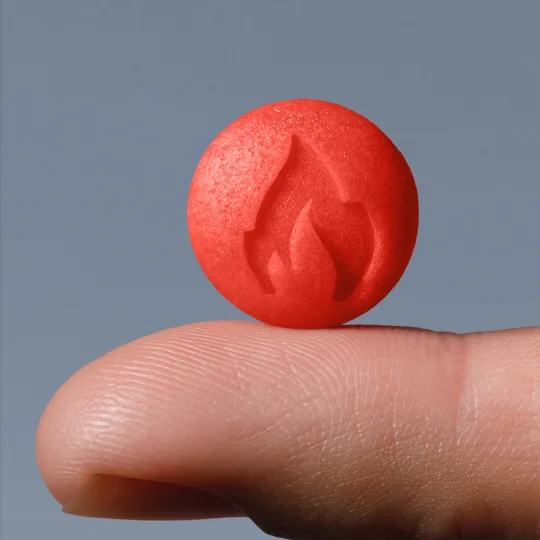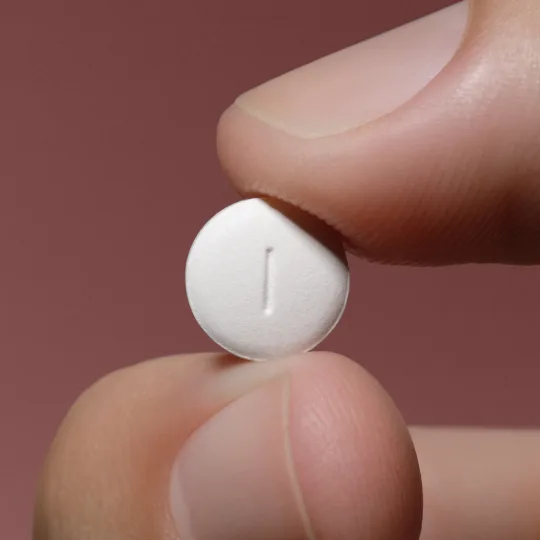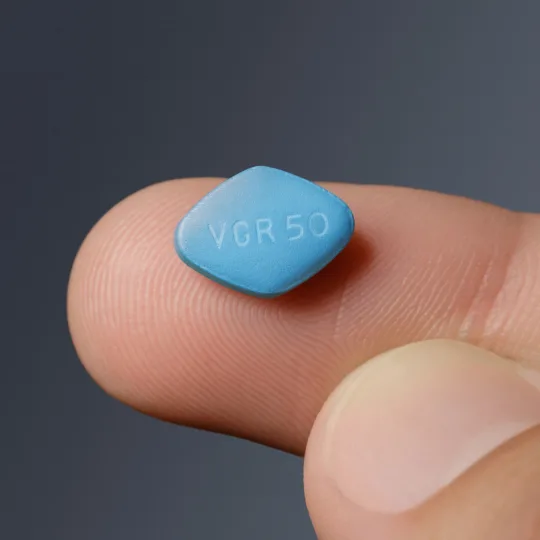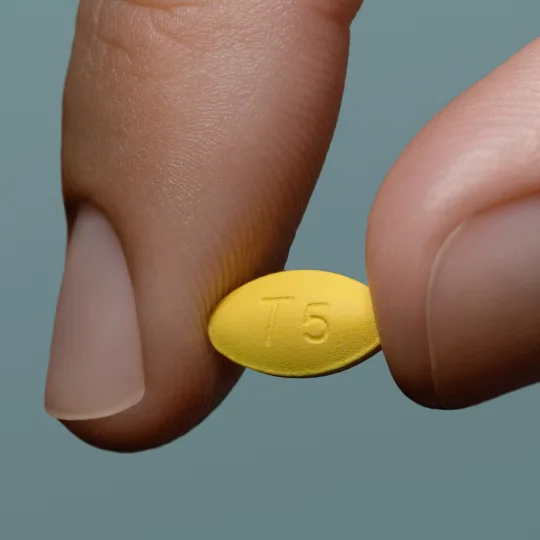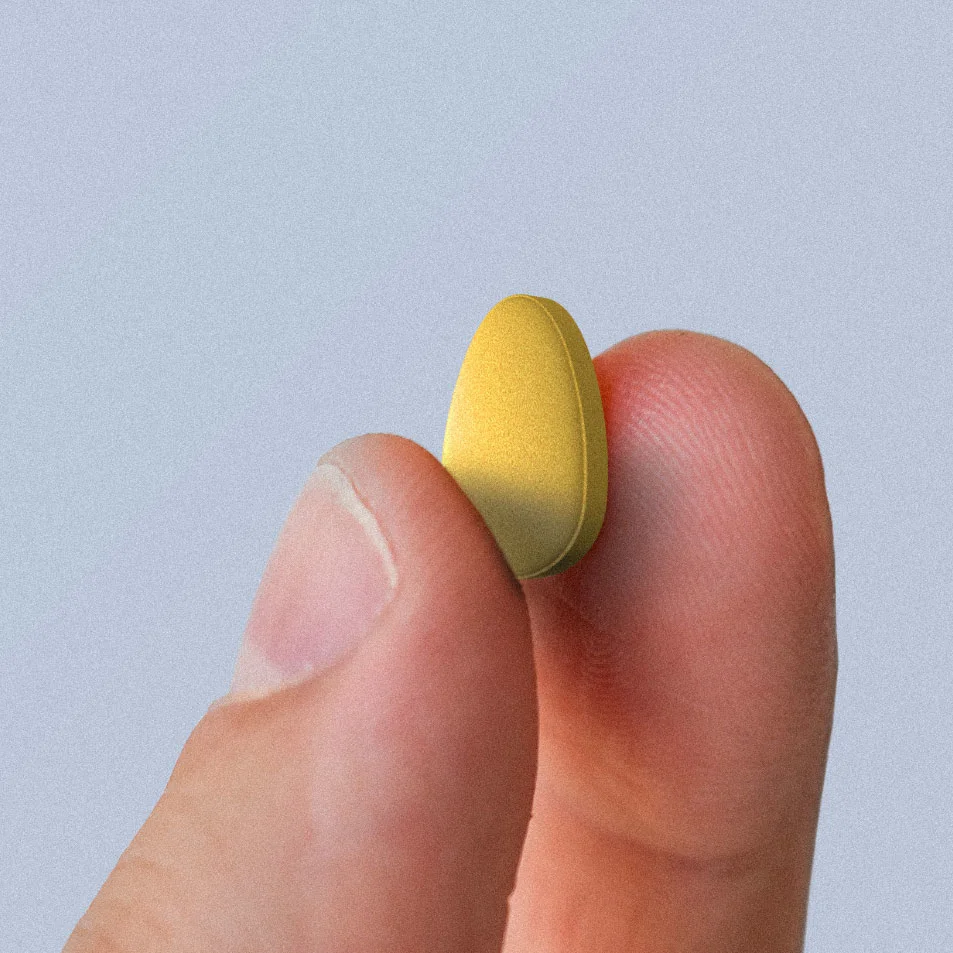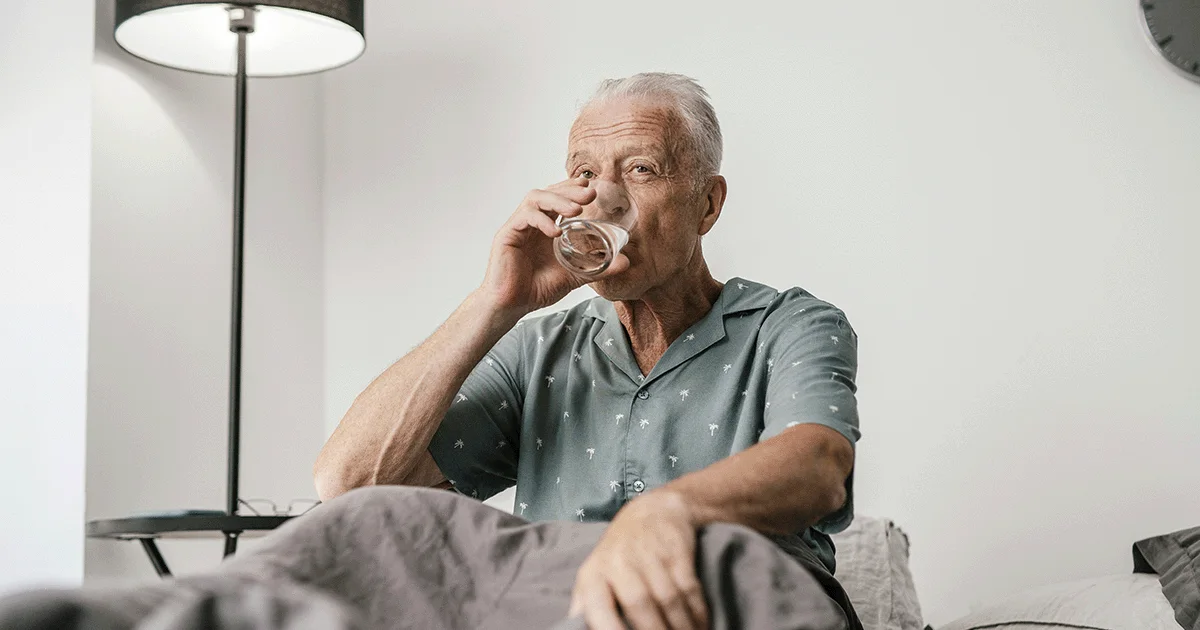Key takeaways
Erectile dysfunction creams are relatively fast-acting, topical treatments you apply directly to the penis; they work in part by increasing blood flow to the penis to help treat mild to moderate erectile dysfunction (ED).
While research is limited, two of the more science-backed options are Vitaros—an ED cream available in Europe—and Eroxon—an ED gel cleared by the US Food and Drug Administration (FDA).
ED creams can be a good option for individuals who prefer a non-invasive alternative to oral medications or who cannot tolerate the side effects of drugs like Viagra or Cialis.
Here's what we'll cover
Here's what we'll cover
Here's what we'll cover
Key takeaways
Erectile dysfunction creams are relatively fast-acting, topical treatments you apply directly to the penis; they work in part by increasing blood flow to the penis to help treat mild to moderate erectile dysfunction (ED).
While research is limited, two of the more science-backed options are Vitaros—an ED cream available in Europe—and Eroxon—an ED gel cleared by the US Food and Drug Administration (FDA).
ED creams can be a good option for individuals who prefer a non-invasive alternative to oral medications or who cannot tolerate the side effects of drugs like Viagra or Cialis.
Difficulty getting hard can (and often does) happen to just about everyone who has a penis at some point (or points) in their life. But if it starts to happen frequently, it could be a sign of erectile dysfunction (ED). The good news? ED is often treatable. The key is finding the right approach for you, whether that’s erectile dysfunction creams, medications like Viagra (sildenafil), lifestyle changes, or a combination of options.
If you’re reading this article, then you’re likely familiar with some of the aforementioned ED treatments—particularly Viagra (hello, little blue pill!) and certain lifestyle modifications (e.g. getting regular exercise, eating healthy). But what about ED creams or gels? These are topical products you apply directly to your penis to boost blood flow so you can get and maintain an erection once sexually stimulated—that’s the goal, at least.
Keep reading to learn more about erectile dysfunction creams and gels, including whether they really work (and if so, how), what the “best” cream for erectile dysfunction is, and how topicals compare to other treatments.
What is erectile dysfunction cream?
Erectile dysfunction cream is a topical treatment for ED available in a gel or cream form. Similar to PDE5 inhibitors (the drug class that includes Viagra and other oral ED medications), the goal of ED creams is to boost blood flow to the penis so you can get and sustain an erection once you’re already aroused. ED gel will not make you horny in and of itself.
“ED creams often contain active ingredients that can act as vasodilators, which relax the blood vessels and increase blood flow to the penis,” says Justin Houman, MD, FACS, a board-certified urologist and assistant professor of Urology at Cedars-Sinai Medical Center. “These creams are applied directly to the penile skin, allowing for rapid absorption and localized action, which can help achieve an erection in response to sexual stimulation. However, these are less effective than oral medications and typically reserved for men who have side effects with pills or are looking for something less conventional.”
Increasing enough blood flow to trigger an erection is no easy task—and one that many of the ED creams and gels on the market can accomplish. The active ingredients must penetrate the thick outer layers of penile tissue to reach the area where blood is trapped to produce an erection. Most available topical products mostly act on the superficial layers of the penis, just under the skin. Since this is not where an erection occurs, they can often cause local swelling rather than a true erection.
ED creams are designed to work quickly—within 5–30 minutes of application. For those seeking spontaneity, this gives them the advantage over traditional medications like Viagra or Cialis (tadalafil), which can take anywhere from 30 minutes to 2 hours to start working, on average.
Unfortunately, alprostadil isn’t readily available as a cream or gel in the United States. However, a compounding pharmacy with a prescription from a healthcare provider could custom-make it. Currently, the only form of alprostadil that’s approved by the US Food and Drug Administration (FDA) is a penile injection, such as Caverject. Alprostadil cream is available under the brand Vitaros in other countries.
So, who might be a fit for ED cream? “ED creams can be considered when patients have mild to moderate erectile dysfunction and prefer a topical treatment over oral medications,” Dr. Houman says. “They are a good option for men who experience side effects from oral ED medications, have contraindications to their use, or prefer a non-invasive, localized treatment with fewer systemic effects.”
For example, oral medications for ED can cause a whole host of side effects, ranging from headache and a stuffy nose to temporary vision changes. The side effects of ED creams, on the other hand, are mainly localized to the penis and involve burning or tingling that typically goes away soon after you use them. Plus, oral ED meds don’t necessarily work for everybody. If you’ve tried them and they didn’t work for you, an ED cream or gel could be an effective treatment option.
Dr. Housman says ED creams can also be an option for men who can’t take oral medications like PDE5 inhibitors due to their other health conditions, such as heart disease, or interactions with other medications, such as nitrates.
Have better sex with Ro
What are the “best” erectile dysfunction creams?
There hasn’t been a ton of research on ED creams and their effectiveness. Of the studies done so far, many are small in scope or didn’t include a placebo for comparison. With that caveat out of the way, there are currently two erectile dysfunction creams available that have some research to back them up: Vitaros (alprostadil) and Eroxon gel (aka MED3000). Vitaros is available in Canada and Europe but not approved in the US. There are other ED creams on the market, such as ones containing L-arginine, but there’s little to no research on their effectiveness.
Vitaros (alprostadil)
“One of the most commonly recommended ED creams [in Europe] is Vitaros (alprostadil cream),” Dr. Houman says. “It has shown effectiveness for men with mild-to-moderate ED and provides a localized alternative to oral medications.”
The active ingredient in Vitaros, alprostadil, is a vasodilator. Meaning it works by causing your blood vessels to widen (or dilate), so blood can flow more easily into the penis. In clinical trials, individuals who used Vitaros experienced significant improvement in their erections and ability to have intercourse. Penile pain, burning, or redness occurred in about 50% of men who used topical alprostadil as a gel to enhance erectile function.
To use Vitaros, you apply the cream using a special applicator into the opening at the tip of your penis. It’s recommended that you urinate beforehand. Vitaros kicks in within 5–30 minutes after application, and the effects last for 1–2 hours. It should not be used more than once in a 24-hour period and should only be used 2–3 times a week.
Alprostadil has also been available as a urethral pellet and penile injection. Currently, the Vitaros cream is only available in Europe and Canada. In the US, the FDA has only approved injectable and suppository forms of alprostadil to treat ED—all requiring a prescription from a licensed healthcare provider. With the injection (Caverject or Edex), you mix a powder and liquid together before injecting it into the shaft of the penis. The suppository form—which was previously available as MUSE (medicated urethral system for erection)—is a pellet placed into the urethra; however, the product was discontinued in 2024.
Eroxon
Eroxon is a non-medicated gel formula of alcohol and water that you apply to the head of the penis before having sex. Since Eroxon does not contain any medication, the FDA considers it a medical device. In clinical studies, Eroxon gel successfully treated ED in about 60% of men in just 10 minutes post-application. Within 20 minutes, that number went up to 75%.
While alprostadil works by widening the blood vessels in the penis, Eroxon does not contain alprostadil. Instead, it contains alcohol, water, glycerin, propylene glycol, carbomer, and potassium hydroxide. It works by providing an immediate cooling effect on the penis as the gel evaporates. This triggers your body to gradually warm the penis back up by increasing blood flow and relaxing the smooth muscles, enabling an erection to happen.
In 2023, the FDA authorized Eroxon to be marketed for ED in men ages 22 and older. Eroxon is the first over-the-counter ED gel available in the US. To use it, you (or your partner) massage the gel onto the head of your penis for about 15 seconds just before sex. Each 0.3-mL tube contains one dose of the gel. You can use it as often as needed—just apply one dose each time before sex. Online ratings of Eroxon suggest that either a majority of men don’t have any benefit with the gel, or those who did not respond may be more likely to provide negative reviews.
Other ED creams
If you search the internet for ED creams, you will find other options than the ones we’ve listed above, but that doesn’t mean they work or are safe. Undisclosed—and potentially dangerous—ingredients are common in many “sexual enhancement” creams. They’re so common, in fact, that the FDA has a dedicated page on its website for all the warnings they’ve issued regarding so-called sexual enhancement pills (e.g. Rhino pills), creams, and other products.
The FDA has approved several proven treatments for ED, including PDE5 inhibitor medications like Viagra and Cialis. ED treatment should be supervised by a healthcare professional to ensure you’re getting a treatment that not only works but is also safe.
You may find erection creams that contain L-arginine as an ingredient. This amino acid supplement has been shown to increase nitric oxide levels in the body, which may help improve erectile function. Taking high doses of oral L-arginine supplements for three months can significantly improve erections in men with mild to moderate ED, according to research, but these findings are limited by the lack of a placebo group for comparison. And some studies have found that combining L-arginine supplements with PDE5 inhibitors like Cialis or Viagra can be more effective than taking the prescription medications alone. But there’s currently no research to back up the effectiveness of L-arginine as an ED cream.
Researchers are still exploring other potential topical ED treatment options, including ED creams that contain the ingredients of PDE5 inhibitors, which are normally taken orally. SST-6006 is one such example; it contains sildenafil (the active ingredient in Viagra). A small study was conducted on 33 men with ED, but the results have yet to be published.
Side effects and risks of ED cream
Typically, the most common side effect of topical ED treatments like Eroxon is skin irritation to the penis or genital area, including soreness, itching, or burning sensations. These side effects can also affect your partner, who may experience vaginal or anal burning or itching. If you experience burning, itching, or soreness, you should stop using Eroxon. If the irritation or pain does not go away, talk to your healthcare provider.
The most common side effects of Vitaros, as reported by up to 23% of men or their partners, include:
Genital pain
Penile burning, swelling, or redness
Vaginal burning
Latex condoms should be used when using the ED cream, Vitaros, particularly if your partner is pregnant, breastfeeding, or trying to get pregnant, as the possible effects of ED cream on the fetus are unknown. Eroxon should only be used with latex condoms, as well.
While rare, it is possible for ED creams to cause serious side effects, including priapism. Priapism describes a (sometimes painful) erection that lasts four or more hours. It requires emergency medical treatment. Dizziness and fainting can also occur.
ED creams and gels can be unsafe for some people to use. For example, Eroxon should not be used by anyone with:
A known allergy to Eroxon’s ingredients (ethanol, propylene glycol, glycerine, carbomer, potassium hydroxide)
A disease or deformity of the penis, such as Peyronie’s disease
Red, sore, damaged, or broken skin on their penis
If your healthcare provider has told you to avoid having sex for health reasons, you also should not use Eroxon (or any ED treatment). The makers of Eroxon recommend checking with your healthcare provider before using it if you have ever experienced priapism or if you feel chest pain or shortness of breath after light activity, such as going up two flights of stairs.
Vitaros should not be used by anyone with a history of:
Priapism
Hypotension (low blood pressure)
Liver or kidney problems
Dizziness
Fainting
Heart attacks
Blood clots
Penis infection or inflammation
Also, some medications should not be used with ED creams like Vitaros, including other drugs that treat ED, that prevent blood clots, or that manage high blood pressure. Combining these medications can lead to unintended and potentially serious side effects, including dizziness, fainting, priapism, and bleeding.
Be sure to share your full medical history and list of medications with your healthcare provider before using an ED cream so they can determine if it’s safe for you to use or if another ED treatment would be better.
Alternatives to ED creams
While ED creams work for some people, they may not be the best option for all men, says Dr. Houman, including “men with severe ED that may require more invasive treatments (e.g. injections, implants), those allergic to the ingredients in the cream, or men with certain skin conditions that make the use of topical treatments problematic.” And it’s worth noting that they’re not typically the first-line treatment for ED. Oral PDE5 inhibitors like Viagra and Cialis are, thanks to their high success rate of 76%.
There are several alternatives to ED creams, including medication, lifestyle changes, and devices and surgery. When choosing an ED treatment, “it's important to discuss individual needs and preferences with your healthcare provider to choose the right product,” Dr. Houman says.
Prescription medications
Prescription medication for ED includes oral PDE5 inhibitors like Cialis (tadalafil), Viagra (sildenafil), Stendra (avanafil), and vardenafil. As mentioned above, these drugs can be highly effective, working for up to 76% of men of people with ED. And in cases where one of these medications (say, Viagra) doesn’t work, research suggests that about half of men will respond to a different one (say, Cialis).
Besides traditional oral tablets, certain PDE5 inhibitors can be found in other formulations. Ro Sparks, for example, is a sublingual (under the tongue) tablet that combines the active ingredients in Viagra and Cialis (sildenafil and tadalafil) for a fast-acting treatment that starts working in 15 minutes, on average, and stays active for up to 36 hours. Daily Rise Gummies, also available through Ro, are fruit-flavored gummies containing tadalafil that are to be taken once a day, allowing for increased spontaneity.
Like ED creams, PDE5 inhibitors only work once you’re already aroused. They don’t make you horny to begin with. Rather, they work by blocking an enzyme called PDE5, so the smooth muscles in the penis can relax, more blood can flow in, and help you to get and stay hard.
Compared to ED creams, the effects of PDE5 inhibitors tend to last longer: 4–6 hours in most cases or 24/7 in the case of daily Cialis. But they can take longer to kick in, depending on the medication. For example, it can take anywhere from 30 minutes to 2 hours for Viagra or Cialis to start working, while an ED topical like Eroxon can help an erection happen in about 10 minutes after application.
About 40% of men who take prescription ED medication experience mild side effects like headache, stuffy nose, indigestion, and temporary vision changes. While rare, priapism can also occur when taking these drugs.
“ED creams are generally less effective than PDE5 inhibitors (e.g. sildenafil or tadalafil) for most patients, as these oral medications have a more robust efficacy profile,” Dr. Houman says. “However, creams may be a better option for men who cannot tolerate oral medications.”
Lifestyle changes
ED is often caused by multiple factors. Health conditions such as heart disease, obesity, diabetes, high blood pressure, high cholesterol, and depression are all strongly associated with an increased risk of ED.
Addressing such underlying conditions—through medication, therapy, and lifestyle modifications—can help relieve or treat ED naturally. Some simple lifestyle changes can also help you get better erections without medication. These include:
Following a nutritious eating plan. Improving your diet may be recommended if you have a health condition associated with ED, such as obesity or diabetes. The Mediterranean diet, in particular, has been associated with a lower risk of ED. Generally speaking, however, filling your plate with erection-friendly foods such as leafy greens, peppers, tomatoes, and nuts can help promote erectile function and address ED symptoms. Reducing your intake of other foods, such as red meat, high-sodium and processed foods, and sugar-sweetened foods and drinks, can also play a part.
Increasing your physical activity. A healthy exercise routine (specifically one that involves moderate to vigorous aerobic exercise) is recommended to prevent and treat ED. In fact, research suggests regular exercise can reduce the risk of ED by 20% in men over 40. Plus, staying active can help with weight management and improve cardiovascular health—two effects that can contribute to better erections.
Losing weight. People with obesity or overweight are more likely to experience ED. So, it makes sense that a meta-analysis has found weight loss can improve erectile function as well as testosterone levels in men. (In case you’re unfamiliar, low testosterone levels can impact your ability to get and maintain an erection.)
Taking care of your mental health. Sexual function and performance are just as much about the physical as they are about the psychological. Practicing stress management techniques, such as meditation, mindfulness, and deep breathing, can help address emotional or mental struggles that may be contributing to your down-there difficulties. These tactics—as well as therapy—can also help address ED-related psychological challenges, such as sexual performance anxiety.
Quitting smoking. Smoking is associated with ED, and those who quit smoking can see their erections improve by 25%.
Cut back on alcohol. People who drink heavily are more likely to have ED, and we’re not just talking about whiskey dick.
Devices and surgery
While PDE5 inhibitors and lifestyle modifications can be effective for many people, there are still more options for treating ED. Up next? Penis pumps and surgical implants.
A penis pump, aka a vacuum erection device (VED), consists of a hollow plastic chamber that fits over the penis and is attached to a pump—either hand-operated or battery-powered. By creating suction, the pump increases blood flow to the penis, causing it to get hard. Once you have an erection, you place an elastic band at the base of your penis to maintain the erection for up to 30 minutes.
For those seeking a permanent solution to their ED, there are penile implants. This surgical procedure involves implanting a device within the penis to provide the ability to achieve an erection. There are two primary types of implants: inflatable and malleable. Inflatable implants use a saline-filled pump, typically placed in the scrotum, to simulate a natural erection, while malleable implants are flexible rods that can be manually adjusted to an erect or flaccid position.
While penile implants are more invasive and costly compared to other treatments, they tend to be highly effective, with a patient satisfaction rate of around 90%. This option is generally recommended for men whose ED has not responded to less invasive treatments.
“Compared to penis pumps, creams are less effective for men with severe ED but are easier to use and less cumbersome,” Dr. Houman says. “When compared to surgery (e.g. penile implants), creams are significantly less effective but are non-invasive and reversible. The choice depends on the severity of the ED and patient preferences.”
Bottom line
Erectile dysfunction creams can be an effective option for people seeking a localized, non-invasive way to improve their erections. Whether you’re looking for a quicker onset, fewer side effects, or an alternative to oral medications, ED topicals like Eroxon and (outside of the US) Vitaros can be a good fit for mild-to-moderate ED. As always, talking to a healthcare provider is the best way to find the most appropriate treatment for you and your needs.
That said, here’s a quick recap so you can go into your consultation prepared to review all of the options out there.
ED creams and gels are applied topically to the penis and work by increasing blood flow to help achieve and maintain an erection in response to arousal. They can be especially suitable for individuals with mild to moderate ED, who can’t tolerate oral medications, or who are seeking a non-invasive alternative.
Vitaros and Eroxon are two ED creams with clinical evidence supporting their effectiveness. While the former is available in Europe, the latter is FDA-authorized as an OTC product.
Compared to first-line treatment like PDE5 inhibitors (think: Viagra, Cialis), ED creams can kick in faster. Eroxon, for example, can help you get an erection within 10-20 minutes post-application.
Like any other treatment, ED creams can cause side effects. But unlike oral medications, which can cause symptoms throughout the body, ED creams primarily cause localized effects like tingling or mild irritation.
Other options for managing ED include oral medications, lifestyle changes, and devices, among others. At the end of the day, it’s important to consult a healthcare provider to determine what might be behind your ED and how to best address it.
Frequently asked questions (FAQs)
Do erectile dysfunction creams work?
Erectile dysfunction creams can work. In clinical trials, men who used Vitaros (alprostadil) cream reported that it significantly improved their erections and ability to have successful intercourse. Studies of Eroxon gel, which is a hydrogel-alcohol formula available in the US, showed that it successfully treated ED in 60–75% of men within 10–20 minutes of application. It’s important to use an ED cream as directed by your healthcare provider for the best results.
Which cream is best for erectile dysfunction?
Two topical products have been proven in clinical studies to effectively treat ED. These include Vitaros (alprostadil) cream and Eroxon gel, the latter of which is available over the counter in the US. So far, no studies have compared these products.
Is there anything over the counter that works like Viagra?
Viagra is not available over the counter. Eroxon gel is an FDA-cleared erection gel that can stimulate nerve endings to increase blood flow to the penis through a rapid cooling, then gradual warming effect. In studies, Eroxon helped men with ED get hard within 10–20 minutes on average.
What helps ED immediately?
There is no instant fix for ED, but there are fast-acting options, including certain medications and erection creams. Eroxon gel, for example, has been shown to help individuals get hard within just 10–20 minutes post-application. That said, oral ED medications (i.e. PDE5 inhibitors) are commonly the first-line treatment for ED—and for good reason. Not only are they backed by FDA approval, but they can also kick in rather quickly. While they may not help ED “immediately,” the fastest option among oral ED meds, Stendra, can start to work in 15 minutes. Another fast-acting option for ED is Ro Sparks, a sublingual tablet that can kick in just 15 minutes, on average.
DISCLAIMER
If you have any medical questions or concerns, please talk to your healthcare provider. The articles on Health Guide are underpinned by peer-reviewed research and information drawn from medical societies and governmental agencies. However, they are not a substitute for professional medical advice, diagnosis, or treatment.
Viagra Important Safety Information: Read more about serious warnings and safety info.
Cialis Important Safety Information: Read more about serious warnings and safety info.
References
American Society of Health-System Pharmacists (ASHP). (2024). Alprostadil Urethral Suppositories. Retrieved from https://www.ashp.org/drug-shortages/current-shortages/drug-shortage-detail.aspx?id=855&loginreturnUrl=SSOCheckOnly
Anaissie, J. & Hellstrom, W. J. (2016). Clinical use of alprostadil topical cream in patients with erectile dysfunction: a review. Research and Reports in Urology, 8, 123–131. doi: 10.2147/RRU.S68560. Retrieved from https://pmc.ncbi.nlm.nih.gov/articles/PMC4977016/
Bauer, S. R., Breyer, B. N., Stampfer, M. J., et al. (2020). Association of diet with erectile dysfunction among men in the Health Professionals follow-up study. JAMA Network Open, 3(11), e2021701. doi: jamanetworkopen.2020.21701. Retrieved from https://jamanetwork.com/journals/jamanetworkopen/fullarticle/2772916
Government of Canada: The Drug and Health Product Register. (2015). Product Monograph: Vitaros. Retrieved from https://pdf.hres.ca/dpd_pm/00029108.PDF
Cuzin, B. (2016). Alprostadil cream in the treatment of erectile dysfunction: clinical evidence and experience. Therapeutic Advances in Urology, 8(4), 249–256. doi: 10.1177/1756287216644116. Retrieved from https://pmc.ncbi.nlm.nih.gov/articles/PMC5131739/
DailyMed. (2024). Label-Caverject- alprostadil injection, powder, lyophilized, for solution. Retrieved from https://dailymed.nlm.nih.gov/dailymed/drugInfo.cfm?setid=a295fc1e-d82c-4f44-bc2d-a552bf594c98
Eroxon. (2024). Frequently Asked Questions. Retrieved from https://www.eroxon.us/help/faqs/
Eroxon. (2023). Package Insert. Retrieved from https://eroxon.com/app/uploads/2023/03/Eroxon-Product-Leaflet.pdf
Endo USA, Inc. (n.d.). How to Use Edex. Retrieved from https://www.edex.com/how-to-use-edex.php
Hamzehnejadi, M., Ranjbar Tavakoli, M., Abiri, A., et al. (2022). A Review on Phosphodiesterase-5 Inhibitors as a Topical Therapy for Erectile Dysfunction. Sexual Medicine Reviews, 10(3), 376–391. doi: 10.1016/j.sxmr.2022.02.002. Retrieved from https://pubmed.ncbi.nlm.nih.gov/35370122/
Hellstrom, W., Brock, G., Burnett, Arthur L., et al. (2024). PD52-07 efficacy and safety of MED3000, a novel topical therapy for the treatment of erectile dysfunction. Journal of Urology, 211(5S), e1074. doi: 10.1097/01.JU.0001009412.04863.1b.07 Retrieved from https://www.auajournals.org/doi/10.1097/01.JU.0001009412.04863.1b.07
Huang, S. A. & Lie, J. D. (2013). Phosphodiesterase-5 (PDE5) Inhibitors In the Management of Erectile Dysfunction. P & T: A Peer-Reviewed Journal for Formulary Management, 38(7), 407–419. Retrieved from https://pmc.ncbi.nlm.nih.gov/articles/PMC3776492/
Jain, A. & Iqbal, O. A. (2023). Alprostadil. StatPearls. Retrieved from https://www.ncbi.nlm.nih.gov/books/NBK542217/
Kim, S., Cho, M. C., Cho, S. Y., et al. (2021). Novel Emerging Therapies for Erectile Dysfunction. The World Journal of Men's Health, 39(1), 48–64. doi: 10.5534/wjmh.200007. Retrieved from https://pmc.ncbi.nlm.nih.gov/articles/PMC7752520/
Leslie, S. W. & Sooriyamoorthy, T. (2024). Erectile Dysfunction. StatPearls. Retrieved from https://www.ncbi.nlm.nih.gov/books/NBK562253/
Li, H., Xu, W., Wang, T., et al. (2022). Effect of weight loss on erectile function in men with overweight or obesity: A meta-analysis of randomised controlled trials. Andrologia, 54(1), e14250. doi: 10.1111/and.14250. Retrieved from https://onlinelibrary.wiley.com/doi/epdf/10.1111/and.14250
Medicines and Healthcare products Regulatory Agency (MHRA). (2023). Package leaflet: Information for the user: Vitaros 3mg/g cream (Alprostadil). Retrieved from https://www.medicines.org.uk/emc/files/pil.13937.pdf
MedlinePlus. (2023). Alprostadil Urogenital. Retrieved from https://medlineplus.gov/druginfo/meds/a695022.html
Meier-Davis, S. R., Debar, S., Siddoway, J., et al. (2015). Daily application of alprostadil topical cream (Vitaros) does not impact vaginal pH, flora, or histology in female cynomolgus monkeys. International Journal of Toxicology, 34(1), 11–15. doi: 10.1177/1091581814561870. Retrieved from https://pmc.ncbi.nlm.nih.gov/articles/PMC5131739/
Menafra, D., de Angelis, C., Garifalos, F., et al. (2022). Long-term high-dose L-arginine supplementation in patients with vasculogenic erectile dysfunction: a multicentre, double-blind, randomized, placebo-controlled clinical trial. Journal of Endocrinological Investigation, 45(5), 941–961. doi: 10.1007/s40618-021-01704-3. Retrieved from https://pmc.ncbi.nlm.nih.gov/articles/PMC8995264/
Moncada, I. & Cuzin, B. (2015). Clinical efficacy and safety of Vitaros©/Virirec© (Alprostadil cream) for the treatment of erectile dysfunction. Urologia, 82(2), 84–92. doi: 10.5301/uro.5000116. Retrieved from https://journals.sagepub.com/doi/10.5301/uro.5000116
Pfizer Medical Information. (2023). CAVERJECT IMPULSE Instructions For Use. Retrieved from https://www.pfizermedicalinformation.com/patient/caverject-impulse-alprostadil/instructions
Pitta, R. M., Kaufmann, O., Louzada, A. C. S., et al. (2022). The association between physical activity and erectile dysfunction: A cross-sectional study in 20,789 Brazilian men. PloS One, 17(11), e0276963. doi: 10.1371/journal.pone.0276963. Retrieved from https://pmc.ncbi.nlm.nih.gov/articles/PMC9668147/
Rhim, H. C., Kim, M. S., Park, Y. J., et al. (2019). The Potential Role of Arginine Supplements on Erectile Dysfunction: A Systemic Review and Meta-Analysis. The Journal of Sexual Medicine, 16(2), 223–234. doi: 10.1016/j.jsxm.2018.12.002. Retrieved from https://pubmed.ncbi.nlm.nih.gov/30770070/
U.S. Food & Drug Administration (FDA). (2022). De Novo Classification Request for Eroxon. Retrieved from https://www.accessdata.fda.gov/cdrh_docs/reviews/DEN220078.pdf
U.S. Food & Drug Administration (FDA-a). (2023). Device Classification Under Section 513(f)(2)(De Novo). Retrieved from https://www.accessdata.fda.gov/scripts/cdrh/cfdocs/cfpmn/denovo.cfm?id=DEN220078
U.S. Food & Drug Administration (FDA-b). (2023). FDA News Release: FDA Roundup: June 13, 2023. Retrieved from https://www.fda.gov/news-events/press-announcements/fda-roundup-june-13-2023
U.S. Food & Drug Administration (FDA). (n.d.). Orange Book: Approved Drug Products with Therapeutic Equivalence Evaluations. Retrieved Mar. 4, 2025 from https://www.accessdata.fda.gov/scripts/cder/ob/index.cfm
U.S. Food & Drug Administration (FDA). (2024). Tainted Sexual Enhancement and Energy Products. Retrieved from https://www.fda.gov/drugs/medication-health-fraud/tainted-sexual-enhancement-and-energy-products
Vitaros-a. (2022). About Vitaros. Retrieved from https://www.vitaros.eu/about-vitaros
Vitaros-b. (2022). Prescribing Information: Vitaros® 3mg/g alprostadil cream. Retrieved from https://www.vitaros.eu/hcp/health-care-professional-prescribing-information
Vitaros-c. (2022). Vitaros (alprostadil cream): Topical Cream for Erectile Dysfunction. Retrieved from https://cdn.prod.website-files.com/6287528a37f29fb6ac10f62a/62b46650b03ee5251e5593e1_Vitaros%20A5%20leaflet%20Usage%20instr_June2022%20INFO_1584%20UK%20(3)%20(1)%20(2).pdf
Xu, Z., Liu, C., Liu, S., et al. (2021). Comparison of efficacy and safety of daily oral L-arginine and PDE5Is alone or combination in treating erectile dysfunction: A systematic review and meta-analysis of randomised controlled trials. Andrologia, 53(4), e14007. doi: 10.1111/and.14007. Retrieved from https://pubmed.ncbi.nlm.nih.gov/33587304/


